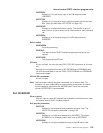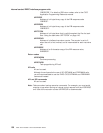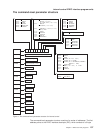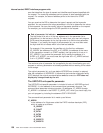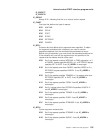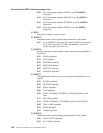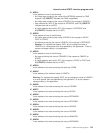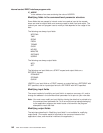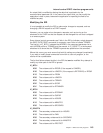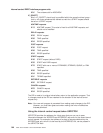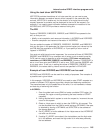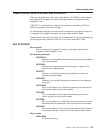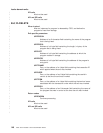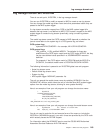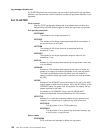An output field is modified by altering the data that is pointed to by the
command-level parameter list. In the case of an output field, you can modify the
application’s data in place, because the application is expecting the field to be
modified anyway.
Modifying the EID
It is not possible to modify the EID to make major changes to requests, such as
changing a DELAY request to a START request.
However, you can make minor changes to requests, such as turning on the
existence bit for SYSID so that the request can be changed into one that is shipped
to a remote system.
Some interval control commands use 2 bits in the EID to indicate a single keyword;
the EXEC CICS START command, for example, uses 2 bits to indicate TERMID.
The first bit, in IC_BITS1, indicates that ADDR6 in the command parameter list is
valid (ADDR6 points to TERMID) and the second, in IC_EIDOPT7, is the keyword
existence bit to show that the TERMID keyword was specified on the command.
Where this occurs you must ensure that both bit settings are changed (consistently)
if you wish to modify these commands from within a user exit program, or the
results will be unpredictable.
The list that follows shows the bits in the EID that can be modified. Any attempt to
modify any other part of the EID is ignored.
IC_BITS1
X'80' The existence bit for REQID (if the request is CANCEL)
X'40' The existence bit for LENGTH (if the request is RETRIEVE) or REQID
X'10' The existence bit for FROM
X'08' The existence bit for LENGTH
X'04' The existence bit for TERMID
X'02' The existence bit for SYSID
X'01' The existence bit for RTRANSID.
IC_BITS2
X'80' The existence bit for RTERMID
X'40' The existence bit for QUEUE
X'20' The existence bit for HOURS
X'10' The existence bit for MINUTES
X'08' The existence bit for SECONDS.
IC_EIDOPT6
X'20' The secondary existence bit for HOURS
X'10' The existence bit for FMH
X'08' The secondary existence bit for SECONDS
X'04' The secondary existence bit for MINUTES
X'02' The existence bit for PROTECT
interval control EXEC interface program exits
Chapter 1. Global user exit programs 143



